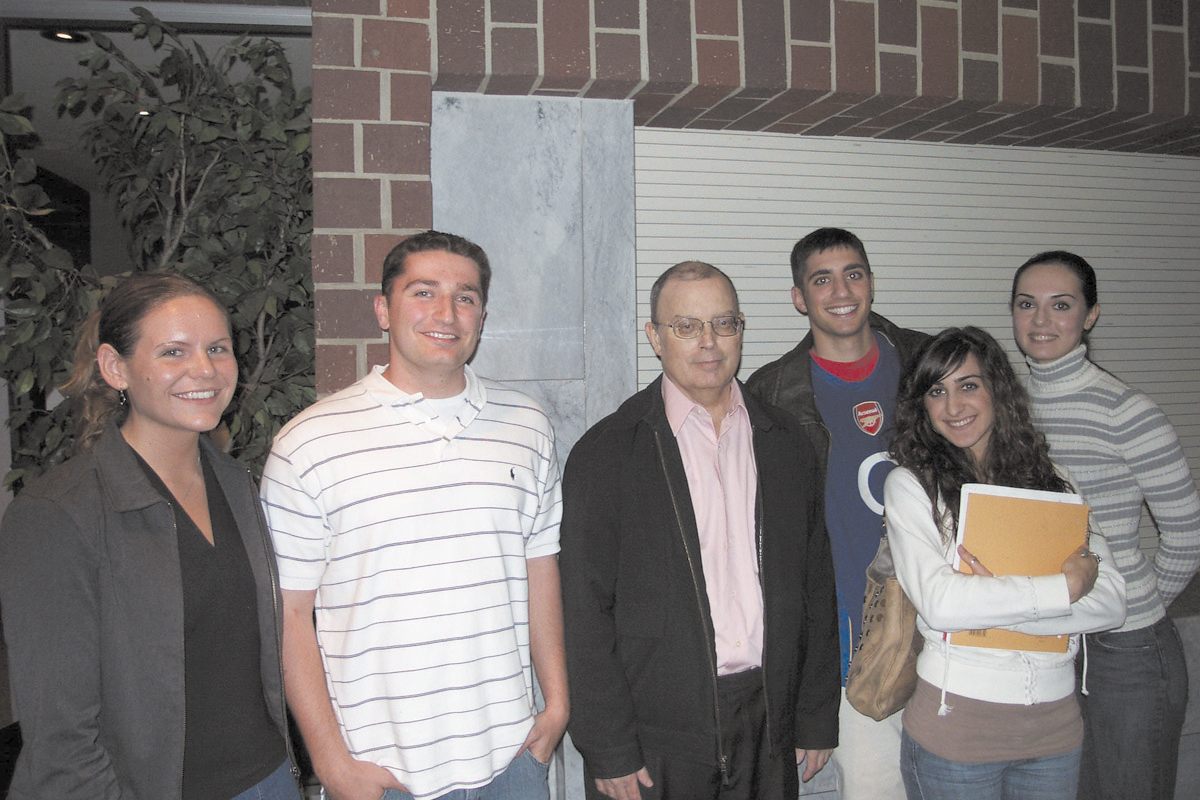Dr. James Reid, Henry Kazan Visiting Professor in Armenian Studies for the Spring 2006 semester gave the final two of his lectures in a three part series.
Part II-“The ‘Death World’ and its Influence on Victim Survivors,” was given on Wednesday, March 22.
Part III- “Symptoms of Post-Traumatic Stress Disorder in Genocide Survivor Writings” was given on Tuesday, April 25.
ISAAC HALLS
STAFF WRITER

On Wednesday March 22, the Henry Kazan Visiting Professor in Armenian Studies, Dr. James Reid, delivered a very powerful lecture on the survivors of the Armenian Genocide, his second in a three- part series of lectures having to do with the Armenian Genocide and its effects on those that survived.
The “Death World,” as Dr. Reid described it, refers to the recognition that a deadly environment dominated everything that was living. This perception of their surroundings led to the creation of the sense of foreshortened future, which is one’s expectation of not being able to have a normal life after the traumatic event. Dr. Reid’s eloquent lecture discussed how the “Death World,” which was created by the perpetrators of the war, influenced the mentality of the Armenian and Pontic Greek survivors.
Dr. Reid read from various memoirs about the horrific and often tragic events affecting the Armenian community during the early 20th century. As Dr. Reid presented account after account of tragedy and butchering that were only recorded because of the brave survivors who dared to remember, one can truly begin to understand the “Death World” mentality that the survivors created for themselves.
From the horrific excerpt from Anooshavan: The Intrepid Survivor, written by Bob Der Mugrdechian, detailing the many instances of abuse by the Turkish prison guards towards the Armenian prisoners, and especially his father Anooshavan Der Mugrdechian, to the atrocities witnessed by the Reverend Abraham Hartunian after the massacres that took place in his own village, the “Death World” becomes much more real. Another powerful part was when Dr. Reid discussed the catastrophic effects that these events had on the survivors such as the thousands of orphans left behind and their struggle to lead a new life of meaning.
One quote from Dr. Reid’s lecture that impacted me the most was when he said, “In order to understand what the victims of the Genocide underwent and the survivors witnessed, the graphic images must come to light.” Even though it was hard to hear Dr. Reid talk about those events, we must listen to the brave souls willing to talk about it in order for our modern society to truly understand what the Armenian Genocide was like.
ANNE VISSER
STAFF WRITER
Dr. James Reid delivered his third and final lecture in his three- part lecture series entitled “The Inner Dimension of the Armenian Genocide” on Tuesday April 25, 2006. Dr. Reid’s lecture entitled “Post-Traumatic Stress Disorder in Armenian Genocide Survivor Narratives” discussed the symptoms of the psychiatric disorder Post Traumatic Stress Disorder (PTSD) and evidence of the disorder found in the memoirs of the survivors of the Armenian Genocide.
Post Traumatic Stress Disorder (PTSD), is a psychiatric disorder brought on by the onset of having experienced a traumatic event in which the individual was exposed to death, or felt an intense fear, sense of helplessness, or horror in response to a traumatic event. PTSD has two psychological orientations that exist in response to experiencing these events. Identified by Dr. Reid, the first orientation is the life-death continuum, in which “during an extended trauma, such as a campaign or a death march, the person begins to feel that death, and not the hope for continued life dominates his or her mind.” The second orientation, is the Death Imprint, where “the individual remains haunted by the sight and or the threat of death for many years” after the event has occurred.
During his lecture, Dr. Reid eloquently read passages from survivor narratives including those of Sano Halo and Anooshavan Der Mugrdechian. Taking the information from these passages, he gave his expert opinion of PTSD as evident in the symptoms of the disorder that were present in each of the memoir passages. Such symptoms included flashbacks of the traumatic events, reliving the tragic events, avoidance of stimuli and anything related to the event, the inability to recall an event, a loss of interest or a lack of participation in activities, hypervigilance, and a sense of a foreshortened future. According to Dr. Reid, everyone who survived the Genocide suffered from this disorder and from one or more of these symptoms. Moreover, these symptoms point to the long-term suffering of the Armenian community for generations after the annihilation of Armenia.
Dr. Reid’s three part lectures series on the “Inner Dimensions of the Armenian Genocide” offers a unique view into his course “The Armenian Genocide Through Armenian Genocide Survivor Narratives” which is being offered this spring at California State University, Fresno. This class is held on Wednesday afternoons from 2:00-4:50 in East Engineering Room 108.
 Hye Sharzhoom Armenian Action
Hye Sharzhoom Armenian Action